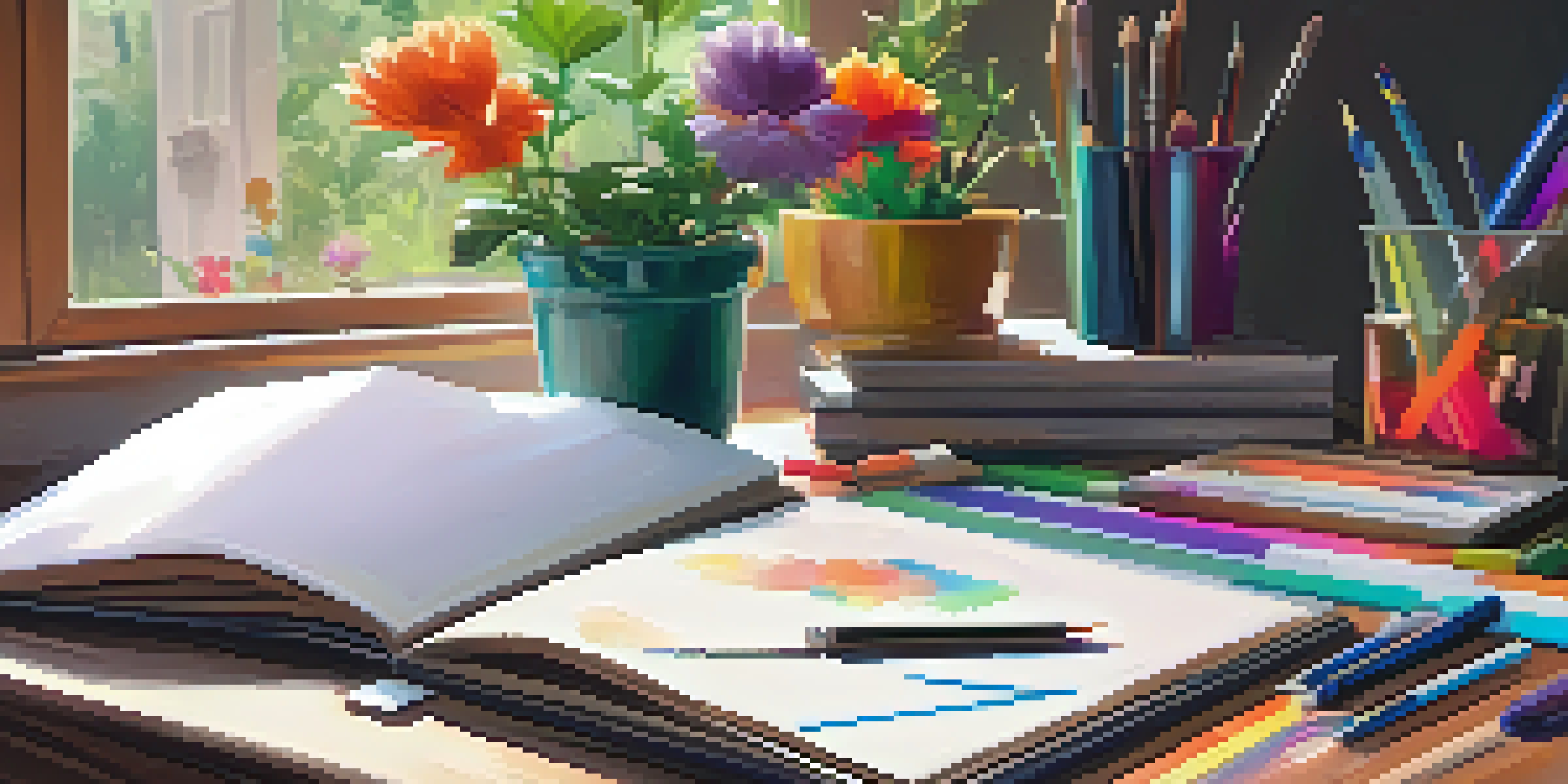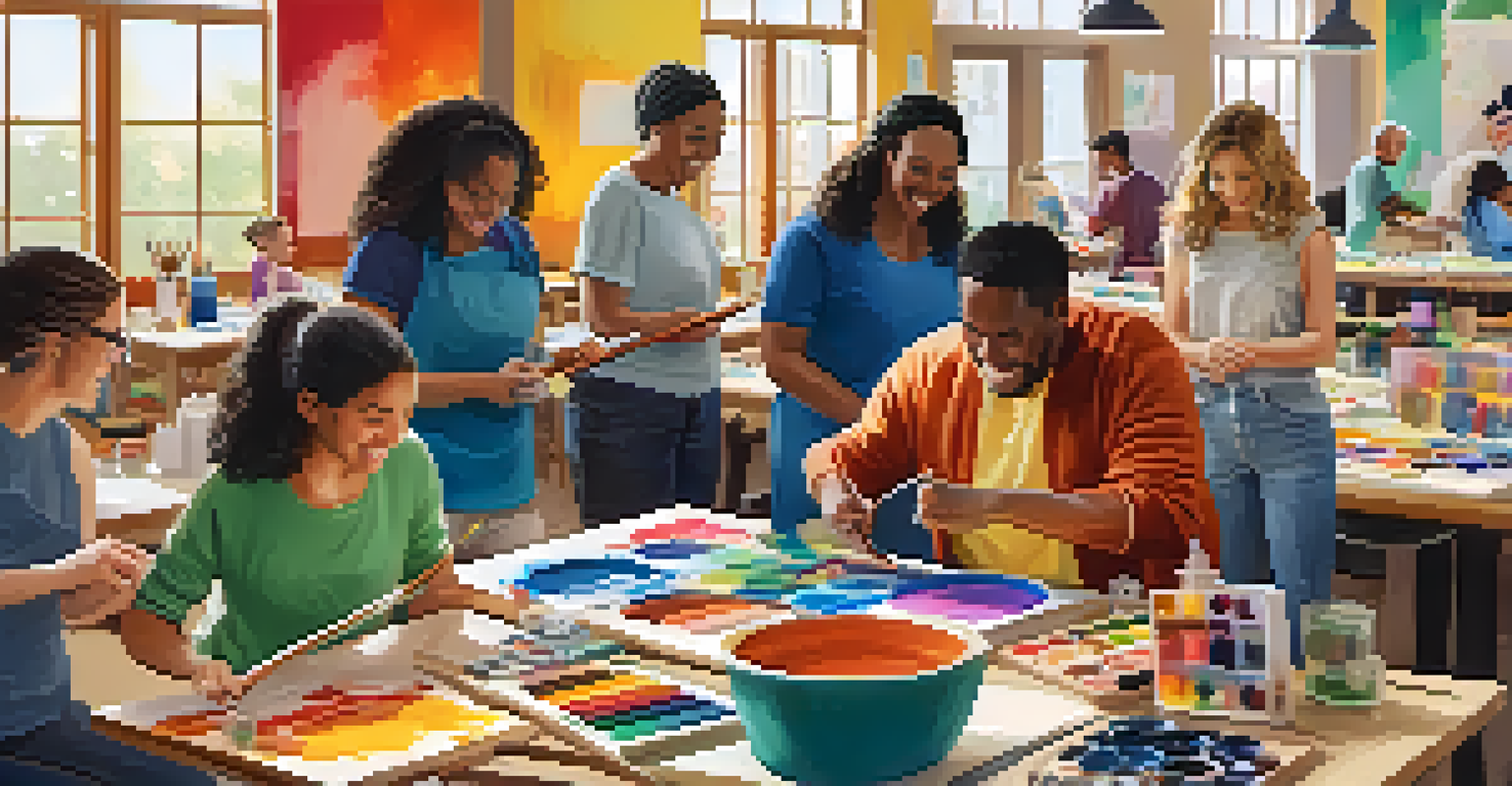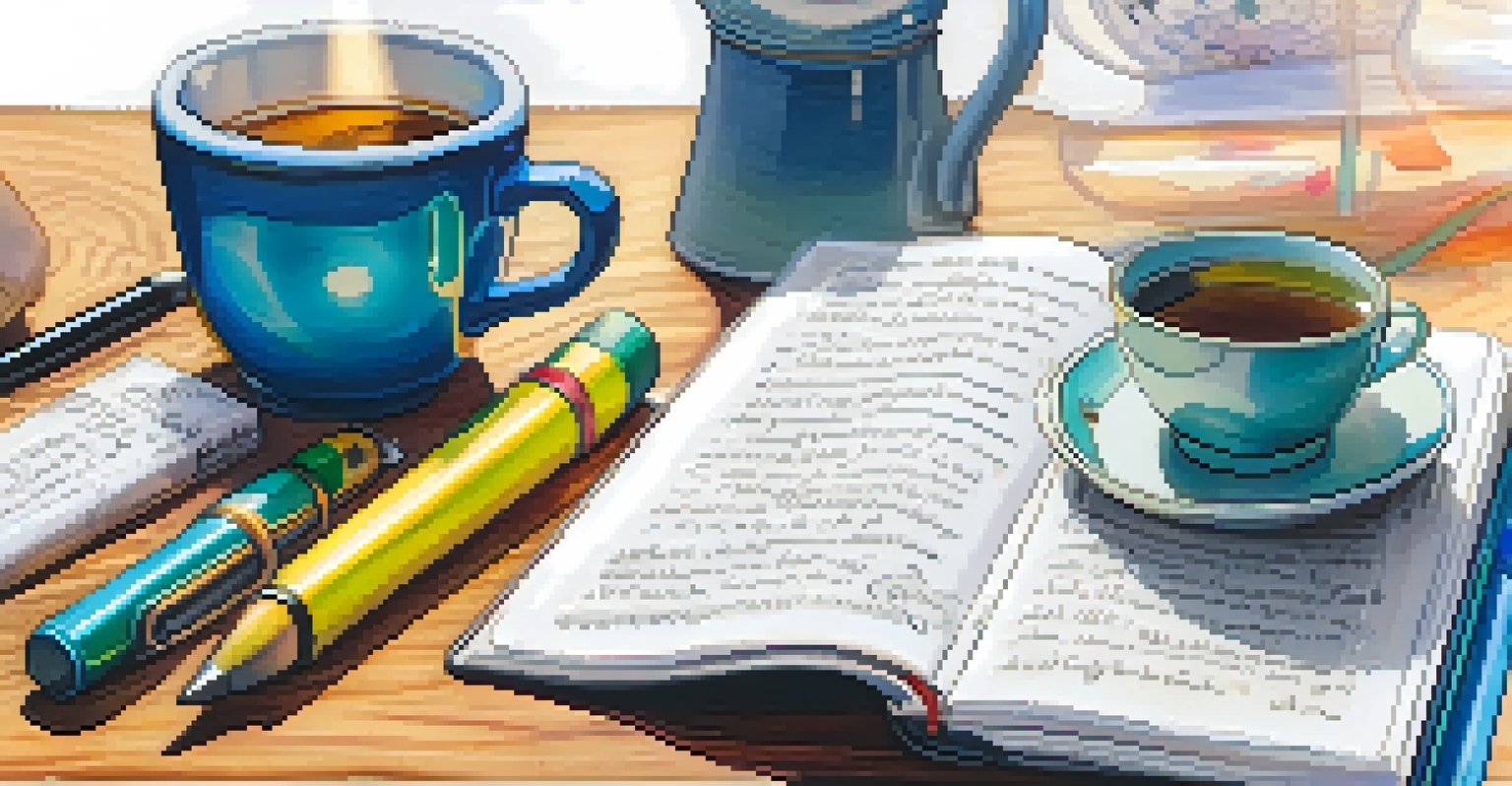How to Leverage Creative Outlets for Preventing Work Burnout

Understanding Work Burnout: The Silent Productivity Killer
Work burnout is more than just feeling tired; it's a state of emotional, physical, and mental exhaustion caused by prolonged stress. It can creep up on you, often leading to reduced productivity and a lack of motivation. Recognizing the signs early is crucial for preventing it from taking hold.
Creativity takes courage.
Common symptoms include chronic fatigue, irritability, and a sense of detachment from your work. When you start to feel overwhelmed and disengaged, it's time to take action. This is where creative outlets can play a transformative role.
By engaging in creative activities, you can break the cycle of stress and rejuvenate your mind. This shift not only uplifts your mood but also enhances your overall well-being, making it easier to tackle work challenges with renewed energy.
Why Creative Outlets Are Essential for Mental Health
Creative outlets serve as a powerful remedy for stress, allowing you to express your feelings and thoughts in a constructive way. Whether it's painting, writing, or playing music, these activities encourage self-expression and emotional release. This can be particularly beneficial when work pressures become overwhelming.

Engaging in creative hobbies can also foster a sense of accomplishment and satisfaction. Completing a project or mastering a new skill can boost your confidence, countering the feelings of inadequacy that often accompany burnout. This positive reinforcement is vital for mental resilience.
Recognizing Burnout Early
Identifying early signs of work burnout, such as chronic fatigue and irritability, is essential for taking proactive measures to prevent it.
Additionally, creativity promotes mindfulness, drawing your attention away from daily stressors. By immersing yourself in a creative task, you enter a state of flow, where time seems to stand still. This experience is not only refreshing but also nurtures your mental health.
Finding Your Creative Outlet: Explore Your Options
The first step in leveraging creativity to prevent burnout is finding an outlet that resonates with you. Consider what activities you enjoy or have always wanted to try—this could be anything from photography to pottery. The key is to choose something that excites you and feels fulfilling.
Art is not freedom from discipline, but disciplined freedom.
If you're unsure where to start, think back to your childhood hobbies or interests. Sometimes, revisiting activities that once brought you joy can reignite that spark. Don't hesitate to experiment with different outlets until you find the one that feels just right.
Remember, there are no right or wrong choices when it comes to creative expression. The goal is to engage in something that brings you joy and allows your mind to wander freely, away from work-related stress.
Incorporating Creativity into Your Daily Routine
Integrating creative activities into your daily life doesn't have to be time-consuming. Even short bursts of creativity can be incredibly beneficial. Consider setting aside just 15-30 minutes each day to immerse yourself in your chosen outlet, whether it's sketching, writing, or dancing.
You can also blend creativity with your regular tasks. For instance, if you enjoy cooking, experiment with new recipes or presentation styles. This approach not only makes mundane tasks more enjoyable but also infuses creativity into your daily routine.
Creative Outlets Enhance Well-Being
Engaging in creative activities can reduce stress and foster a sense of accomplishment, promoting better mental health and resilience.
The key is consistency. By making creativity a regular part of your day, you’re more likely to experience its stress-relieving benefits. Over time, these small moments can add up to significant improvements in your overall mental well-being.
The Role of Community in Fostering Creativity
Connecting with others who share your creative interests can enhance your experience and motivation. Joining local art classes, writing groups, or online forums can provide a sense of community and support. This interaction can also inspire new ideas and perspectives that enrich your creative journey.
Collaboration can be particularly rewarding. Working with others not only brings fresh energy to your projects but also fosters a sense of belonging. You might find that sharing your experiences and challenges with fellow creatives can alleviate feelings of isolation often associated with burnout.
Moreover, community engagement encourages accountability. When you commit to sharing your work or attending classes, you're more likely to carve out time for creativity, which can be a powerful antidote to burnout.
Setting Boundaries to Protect Your Creative Time
To truly benefit from creative outlets, it's essential to set boundaries around your time. This means prioritizing your creative pursuits and treating them with the same importance as work commitments. By scheduling dedicated creative time, you're more likely to stick to it and reap the benefits.
Communicate your boundaries to colleagues and family members, letting them know when you need uninterrupted time for your creative practice. This not only helps you stay focused but also encourages others to respect your personal time.
Community Supports Creative Growth
Connecting with like-minded individuals through creative pursuits can inspire new ideas and provide motivation, combating feelings of isolation.
Remember, it's okay to say no to additional work responsibilities if they encroach on your creative time. By protecting these moments, you're investing in your mental health and overall productivity.
Reflecting on Your Creative Journey: Growth and Healing
As you engage in creative outlets, take time to reflect on your journey. Consider keeping a journal where you document your experiences, thoughts, and feelings related to your creative pursuits. This practice can provide valuable insights and help track your progress over time.
Reflection not only allows you to celebrate your achievements but also to identify areas for growth. You may discover patterns in your creative process that reveal what works best for you, helping to tailor your approach for maximum benefit.

Ultimately, embracing creativity as a tool for preventing burnout is an ongoing journey. By consistently engaging with your creative side, you cultivate resilience, enabling you to navigate challenges with a refreshed perspective.